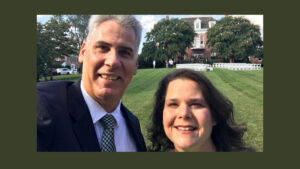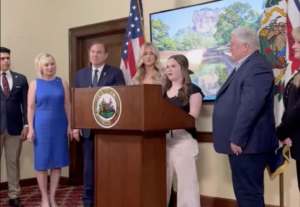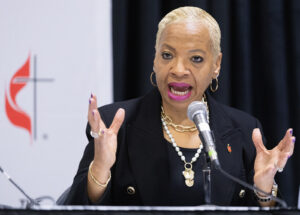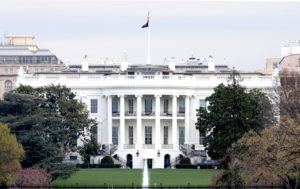
The SBC Executive Committee voted to recommend adding the National Day of Prayer back to the SBC Events Calendar beginning in 2018–2019 and into the future. This is a return to previous SBC action to include the National Day of Prayer on the SBC Calendar.
The National Day of Prayer has been an annual occurrence since a joint resolution of the US Congress establishing it was signed into law by President Harry S. Truman in 1952. The specific day was set from year to year until 1988 when the law was amended under the Reagan administration, designating the first Thursday of May as the date for the annual observance.
From the outset, Southern Baptists have participated in the National Day of Prayer in various ways, at times petitioning the US president to set the National Day of Prayer to coincide with specific events prior to 1988; attending signing ceremonies for the National Day of Prayer; serving as honorary chairmen of the National Day of Prayer; organizing local and regional National Day of Prayer events across the United States; and speaking at National Day of Prayer breakfast events at the White House.
Following the 1988 amendment to set the National Day of Prayer to a fixed date, the Executive Committee recommended that the National Day of Prayer be added the SBC Calendar of Activities from 1989 until 2000. That year, the SBC adopted a new name for its own day of prayer—Day of Prayer for Revival and Spiritual Awakening—and moved the annual observance to March. The SBC day of prayer was changed to January following the adoption of the Great Commission Task Force report in 2010.
Former SBC President Ronnie Floyd, elected in 2017 to serve as president of the National Day of Prayer Task Force, has asked the SBC to return the National Day of Prayer to the SBC Calendar and to encourage Southern Baptists to join other Christians across the nation in prayer each May.
National Day of Prayer Timeline
The modern law formalizing the annual observance of a National Day of Prayer was enacted in 1952, although earlier days of fasting and prayer had been enjoined by the government. The first Continental Congress called for a national day of prayer in 1775. The Second Continental Congress continued this as an annual event from 1775 until 1783. President John Adams declared national days of prayer in 1798 and 1799 and, in the midst of the Civil War, President Abraham Lincoln called for a national day of prayer in 1863.
In 1952, by a joint resolution, Congress established the National Day of Prayer as an annual event, signed into law by President Harry S. Truman. In 1988, the law was amended and signed by President Ronald Reagan, designating the National Day of Prayer as the first Thursday in May (36 US Code §119). The constitutionality of the law was upheld by the Seventh Circuit in 2011 in Freedom From Religion Foundation, Inc. v. Barack Obama.
According to the National Day of Prayer website, since 1789 there have been 146 national calls to prayer, humiliation, fasting, and thanksgiving by the President of the United States, with sixty-nine presidential proclamations for a National Day of Prayer since the adoption of the 1952 law. Thirty-five of the forty-five US Presidents have signed proclamations for a National Day of Prayer, including every President since 1952. Presidents Gerald Ford [1976], George H. W. Bush [1989–1991], and Barack Obama [2012] signed multiple National Day of Prayer Proclamations in the same year.
















